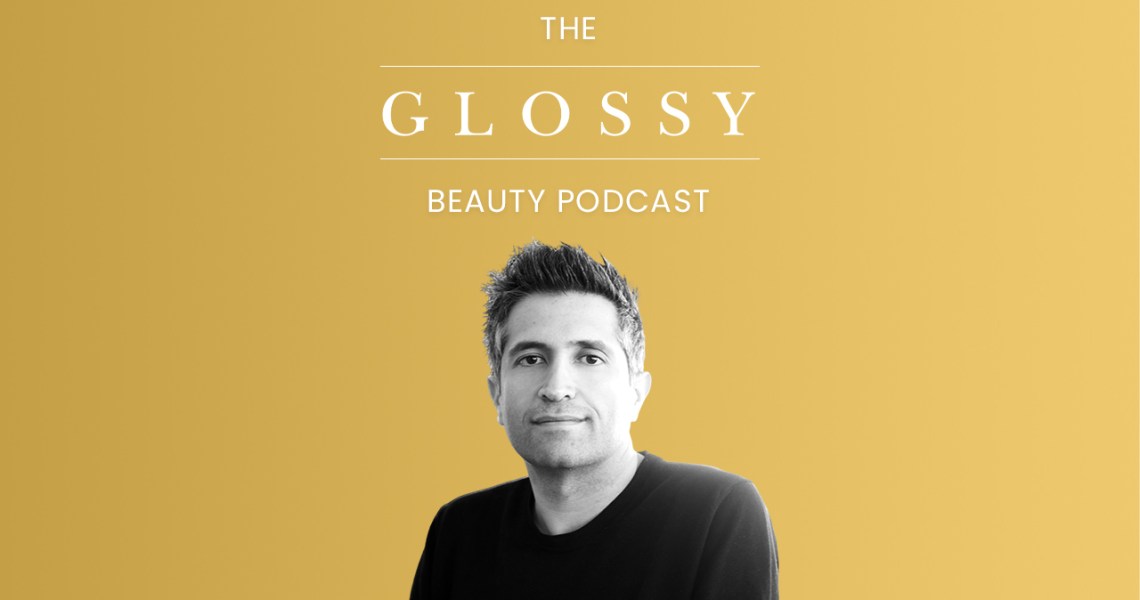Subscribe: Apple Podcasts | Stitcher | Google Play | Spotify
Though a 15-year-veteran in beauty, Guive Balooch, head of L’Oréal’s technology incubator, considers his outsider-turned-insider perspective a skill. Balooch started his professional career as an instructor at the University of California, Berkeley before working in pharmaceuticals.
“I spent almost half of my life really focused on academia and science,” he said on the most recent episode of the Glossy Beauty Podcast. “I fell upon this job in L’Oréal, because I was moving to Chicago for family reasons .. I didn’t know anything about the company. I will say that I did like fashion and beauty, in general, even before joining L’Oreal, but I didn’t really know much. I discovered this incredible industry … I feel like if I didn’t grow up in an academic family that I probably would have ended up being a marketer, because I really like business and product and consumers. At the same time, I feel a bit lucky because I have this fundamental science background, and I used my experience of being at L’Oréal almost 15 years to learn the marketing and the consumer part.”
In the early to mid 2000’s L’Oréal’s technology and digital ambitions were just getting started. Balooch found his footing in the now timely skin and hair sectors, but he knew technology had the power to transform the beauty industry, even back then. “The idea that we’ve have had from day one on my team has been: How can we really elevate the beauty experience for people around the world by using tech?”
Despite Covid-19, those ambitions have not changed. In 2021, L’Oréal is moving forward with its “Water Saver” sink to reduce water consumption in New York salons, and it’s debuting Perso, the company’s personalized beauty device, through YSL Beauty’s lipsticks next quarter.
Below are additional highlights from the conversation, which have been lightly edited for clarity.
Ad position: web_incontent_pos1
L’Oréal’s technology filter
“The idea that we have had from day one on my team has been: How can we really elevate the beauty experience for people around the world by using tech? And that means that we look at age-old consumer needs things that have been around [forever]. Beauty has been around since almost the beginning of time. So when you think about that, the needs of consumers are things that are the most important to understand how we can solve. And if those needs today can’t be solved without technology, we tackle those problems. So to be more pragmatic, we look at areas like personalized beauty — this idea that every human being on the face of the earth should have a product made for them without having to go through a maze of 1,000 options and auditioning every product in the world. To get there, we look at things like measurement tools, the ability to give people the right data using tech — about their skin tone, about their skin and their habits. We look at sustainability: How we can use tech to make the world a better place, in terms of water consumption and areas like that. And also magical applicators, things that can really transform the face. So for anything that is in-between that physical and digital, [we] build a system around the consumer.”
Making life easier for the consumer
“We can’t wear [lipstick] out and not a lot of people are wearing [lipsticks] outside as much. But there is something when you’re on a call, when you’re doing a video call — lipstick is this iconic makeup product that can immediately transform you. And it’s something that’s also emotional. We’re living in this time, and even in more of an emotional world, we need to feel good about ourselves … Sometimes that means not wearing anything, makeup-wise. Other times, it’s just getting that lipstick and just applying that as this ritual that makes you feel good. And the thing that we wanted to create with this [Perso] device was not making people go out and buy 100 lipsticks for 100 trends. Why can’t they see a trend that they want, that they see on online, and just try the product today? When you do that, you open more daring options for people that people will try. If I have to buy a tube of a very daring color, maybe it’s a different decision for me than if I can try that with my personal device … I can try hundreds more with only three cartridges.”
Innovation has to push past cyclical trends
“Five years ago, I would say, ‘Well, I don’t listen to trends, because we’re trying to create something that the consumer doesn’t have today, because tech is something that hasn’t been adopted in the consumer world.’ In the beauty world, 10 years ago, it was at the beginning. There was no beauty company at CES. We were one of the first. But now it’s different. Now what I realized over time is that there are different stages where we have to look at trends. We don’t look at trends to create projects, because a lot of our products are things that are something that doesn’t live in the consumers’ beauty world today. But we do look at them first to check the tensions. What are the things that people really want in their [lives], for their beauty? What are the tensions that they face today, which are unrelated to tech, necessarily. We just look at that as a first step to see what technology can help us solve. Then after we come up with an idea, then we really try to make sure that we have the right trends that fuel the idea.”




